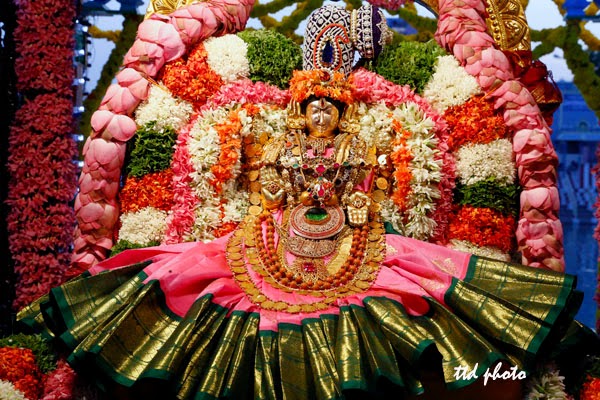Sri Padmavati Ammavaru Brahmotsavams 2024 Tiruchanur, the divine domain of Goddess Sri Padmavati Ammavaru, is one of the highly exalted places in Andhra Pradesh. The temple of Sri Padmavati Ammavaru is situated 5 km from Tirupati town and is exclusively dedicated to Sri Padmavati Ammavaru, the consort of Lord Sri Venkateswara. Tiruchanur Sri Padmavathi Ammavari Read More
Tag: Alamelu manga
Tiruchanur is as old as Tirumala Kshetra! Similarly, Tiruchanur is as splendid and majestic as Venkatachala; the presiding deity at Tiruchanur, Sri Alamelu mangamma is as kind and powerful as Sri Venkateswara!
Vakula Devi: The Divine Mother of Lord Venkateswara
Vakula Devi / Vakula Matha We have been mentioning the name of Vakula Devi in connection with the Swamy Vari kitchen. We have also read that she supervises the dishes prepared in the kitchen. Let us try to know more about Vakula Devi. In the northeast direction of the kitchen, there is a small temple. Read More
Why Padmavathi is not in Tirumala
Why Padmavathi is not in Tirumala Story Behind The husband, Srinivasa lives up the Seven Hills in ‘Ananda Nilaya’! His wife Alamelu Manga lives in Tiruchanur, down the hills in ‘Shanti Nilaya’! Doesn’t it look queer? There seems to be a special reason for this. Long ago, Padmavathi used to live in ‘Shanti Nilaya’, a Read More
Padmavati Devi
GODDESS PADMAVATI DEVI The sacred bath ‘ABHISHEKAM’ is performed to Goddess Padmavati Devi on Fridays. All the rituals and pujas offered to Ammavaru are as per the procedures of ‘PANCHARATRA AGAMA’. Goddess Mahalakshmi immersed herself in penance and emerged as ‘SRI PADMAVATI DEVI’ from a Lotus located at the center of Pushkarini (holy pond) on Read More


